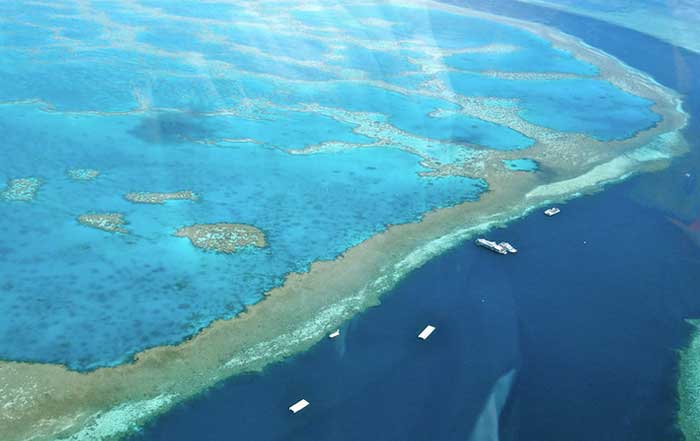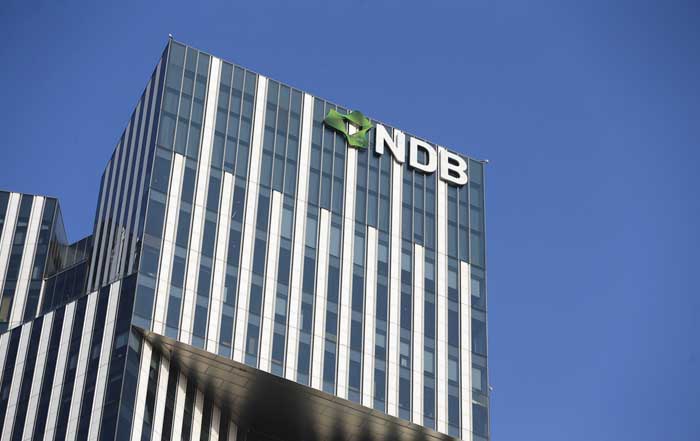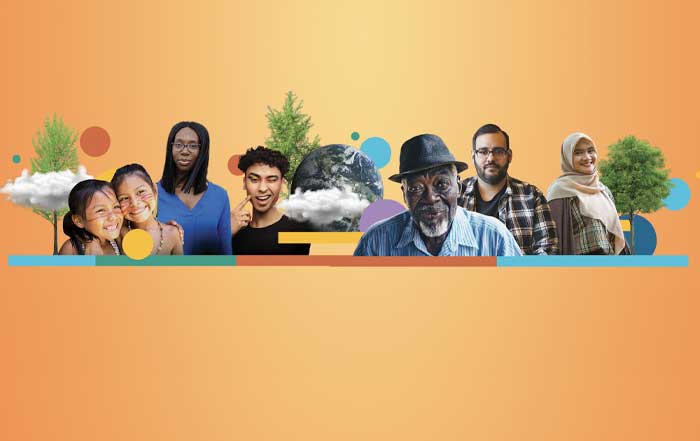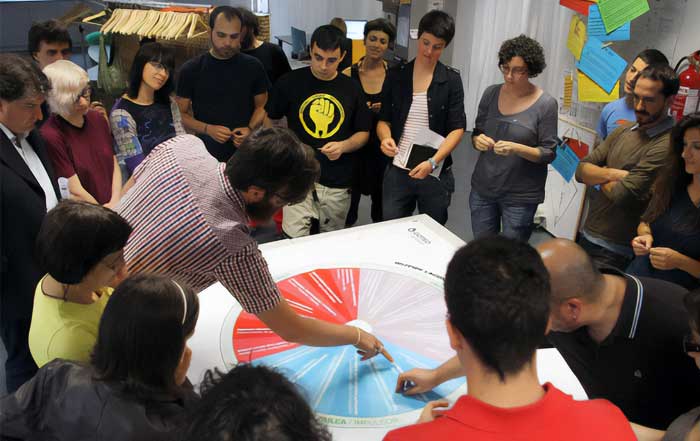In the face of escalating climate change, habitat loss, and species extinction, humanity’s response has evolved from isolated local initiatives to global conservation strategies. Conservation has become not merely a moral cause but a fundamental necessity for sustaining the planet’s ecological balance and economic resilience. The growing awareness of interdependence between humans and nature has inspired governments, corporations, non-profits, and communities to collaborate on restoring ecosystems, rewilding degraded landscapes, and protecting biodiversity for future generations. This article explores the major success stories in global conservation — testaments to collective human will, scientific innovation, and ethical stewardship — that are shaping the environmental narrative of our era.
Protecting Biodiversity Through International Collaboration
Biodiversity forms the foundation of life on Earth, supporting ecosystems that provide clean air, water, and fertile soil. International collaboration has played a pivotal role in safeguarding these systems. The Convention on Biological Diversity (CBD), an outcome of the 1992 Earth Summit, continues to serve as a cornerstone for global biodiversity governance. The latest Kunming-Montreal Global Biodiversity Framework, adopted under the United Nations umbrella, set forth ambitious goals for 2030, including protecting at least 30% of the planet’s land and oceans.
Nations such as Costa Rica, recognized as a model for reforestation, have demonstrated that biodiversity protection aligns with economic development. Once suffering from massive deforestation, Costa Rica has reversed this trend through payment-for-ecosystem-services programs, integrating conservation with tourism and sustainable agriculture. The country’s protected areas now cover more than 25% of its territory, proving that natural wealth can yield long-term prosperity. Similar approaches are now being applied across Southeast Asia and Africa, where environmental sustainability intersects with social progress and tourism. Readers can learn more about these sustainable pathways on worldsdoor.com/environment.html.
Rewilding Europe: Returning Nature to Its Roots
Rewilding, the process of restoring ecosystems to their natural state, has gained momentum across Europe. Organizations such as Rewilding Europe have led ambitious projects in regions like the Danube Delta, the Iberian Highlands, and the Carpathian Mountains. These efforts aim to reintroduce keystone species like the European bison, lynx, and beaver, allowing natural processes to shape the landscape again.
The return of wolves in Germany and Italy, once thought extinct in parts of Western Europe, stands as a powerful symbol of resilience. These apex predators have helped balance prey populations, revitalizing forests and rivers. Rewilding has also brought economic benefits by promoting eco-tourism and rejuvenating rural areas. Studies from institutions such as Oxford University’s Wildlife Conservation Research Unit highlight how local communities benefit from nature-based economies while maintaining ecological integrity. This interconnected approach between ecology and livelihood is explored further on worldsdoor.com/culture.html, emphasizing the cultural dimension of living harmoniously with nature.
Marine Conservation: Reviving Life Beneath the Waves
Oceans cover more than 70% of Earth’s surface, yet they have long been neglected in conservation discourse. Recent years have seen a remarkable shift, as nations and organizations unite to restore marine ecosystems. The Global Ocean Alliance, led by the United Kingdom, and the Blue Nature Alliance are at the forefront of this effort, working to protect large swaths of marine territory.
In the Pacific, the Palau National Marine Sanctuary, one of the world’s largest, safeguards over 500,000 square kilometers of ocean from commercial fishing. Similarly, Australia’s Great Barrier Reef Marine Park Authority has pioneered coral restoration projects, combining artificial reef structures with coral seeding and heat-resistant strains developed through marine biotechnology. These initiatives are complemented by community-based management efforts, particularly in island nations such as Fiji, where traditional knowledge is integrated with scientific conservation.
Marine conservation is also deeply tied to climate resilience. Mangrove restoration along coastlines in Indonesia and the Philippines has proven effective in mitigating storm surges and sequestering carbon. The success of these initiatives demonstrates the crucial link between ocean health, local livelihoods, and planetary stability — a relationship that continues to evolve with innovations in sustainable aquaculture and oceanic research. Readers can explore how ocean ecosystems relate to broader sustainability themes on worldsdoor.com/sustainable.html.
Africa’s Conservation Renaissance
Across the African continent, conservation efforts have moved beyond the colonial legacy of exclusionary national parks toward inclusive, community-based models. In countries like Kenya, Namibia, and Botswana, local communities now manage vast areas of land through conservancies. The Northern Rangelands Trust (NRT) in Kenya has pioneered this model, where local people oversee wildlife protection, land management, and eco-tourism development.
Kenya’s Lewa Wildlife Conservancy, a UNESCO World Heritage Site, has been instrumental in increasing populations of black and white rhinos, as well as Grevy’s zebra. Through partnerships with organizations like Save the Rhino International and the World Wildlife Fund (WWF), anti-poaching units and drone surveillance technologies have drastically reduced illegal hunting. Similarly, Namibia’s communal conservancy program has transformed the lives of rural communities, offering income through sustainable wildlife management and tourism.
Meanwhile, the reintroduction of elephants and lions to regions such as Mozambique’s Gorongosa National Park has restored balance to ecosystems devastated by decades of civil conflict. These transformations show how ecological restoration and peacebuilding can go hand in hand, reflecting an integrated model for conservation in the Global South.
Global Conservation Success Timeline
Major Milestones in Environmental Protection & Restoration
The Role of Technology in Modern Conservation
The integration of technology has revolutionized conservation practices. Advanced tools such as satellite imagery, drones, artificial intelligence, and genetic sequencing enable scientists to monitor ecosystems with unprecedented precision. Platforms like Global Forest Watch, supported by the World Resources Institute (WRI), allow real-time tracking of deforestation using satellite data. Similarly, Google Earth Engine empowers researchers to analyze environmental changes across decades, offering critical insights into land use and biodiversity loss.
In 2025, conservationists increasingly rely on AI-driven predictive models to anticipate environmental threats before they escalate. Projects like Wildbook, which uses AI facial recognition for species like whale sharks and leopards, enhance population monitoring while reducing human intervention. DNA barcoding and environmental DNA (eDNA) sampling allow scientists to detect species presence in water bodies and soil samples, even when direct observation is impossible. Learn more about technological applications in conservation at worldsdoor.com/technology.html.
Moreover, the rise of blockchain in environmental finance has increased transparency in carbon markets and conservation funding. Platforms such as Verra and Toucan Protocol are creating traceable carbon credit ecosystems, ensuring that reforestation and biodiversity projects deliver verifiable impact. These technologies strengthen public trust in conservation finance, aligning environmental ethics with digital innovation.
Corporate Sustainability: Businesses Embracing Environmental Stewardship
In the modern era, corporate engagement in conservation has become not only a social expectation but a strategic imperative. By 2025, environmental responsibility has evolved from corporate philanthropy to a core business function, with sustainability integrated into supply chains, operations, and investment decisions. Multinational corporations are redefining their roles as stewards of the planet, proving that profitability and conservation can coexist within a framework of ethical governance and long-term value creation.
Unilever, one of the global pioneers in sustainable business, has maintained its leadership in integrating biodiversity protection into sourcing and manufacturing. Through its Sustainable Living Plan, the company has reduced deforestation linked to palm oil and improved the livelihoods of farmers across Southeast Asia and Africa. Likewise, Patagonia has continued to set benchmarks in corporate activism by channeling profits into grassroots conservation projects and restoring degraded ecosystems. Their campaigns have demonstrated how authentic commitment to nature can inspire brand loyalty and shape consumer behavior.
In the technology sector, Apple and Microsoft have made substantial progress toward achieving carbon neutrality. Apple’s global operations are powered entirely by renewable energy, and its recycling initiatives—such as the Daisy disassembly robot—recover valuable materials from old devices, closing the loop in electronic production. Microsoft, on the other hand, has pledged to become carbon negative by 2030, investing in carbon capture technologies and reforestation projects worldwide. Such initiatives illustrate how corporate innovation aligns with global environmental priorities. Readers can explore more about this intersection of commerce and ethics at worldsdoor.com/business.html.
Corporate sustainability extends beyond emissions reductions to include financing biodiversity. Financial institutions like HSBC and BNP Paribas are incorporating natural capital accounting into investment frameworks, while asset managers such as BlackRock are pressuring companies to disclose environmental risks. These actions signal a fundamental shift in global finance, where ecological stability is now considered essential for market resilience. Learn more about sustainable investment strategies on worldsdoor.com/innovation.html.
Urban Green Infrastructure: Cities Leading the Climate Battle
Urbanization has long been considered a threat to biodiversity, but in recent years, cities have emerged as laboratories for sustainable innovation. Around the world, urban planners and architects are embedding nature into the fabric of modern cities through green infrastructure, sustainable mobility, and renewable energy integration.
Singapore stands as a shining example of urban sustainability. Known as the “City in a Garden,” Singapore has implemented vertical gardens, rooftop greenery, and ecological corridors that connect fragmented habitats. The city’s Park Connector Network links natural reserves and parks, creating seamless green spaces that support biodiversity and enhance residents’ well-being. Similarly, Copenhagen and Stockholm have embraced climate-smart design, integrating renewable energy systems and resilient urban drainage networks that double as recreational spaces.
In North America, New York City’s High Line and Chicago’s Riverwalk exemplify how urban renewal can coexist with ecological restoration. These projects transform former industrial zones into vibrant green corridors that cool the city, improve air quality, and foster community interaction. In Africa and South America, innovative urban forestry programs in cities like Nairobi and São Paulo are absorbing carbon while addressing the urban heat island effect.
The emergence of “sponge cities” in China, such as Wuhan and Shenzhen, demonstrates how engineering and ecology can merge to combat flooding and pollution. By integrating wetlands, permeable pavements, and rain gardens, these cities absorb excess water while replenishing groundwater reserves. These transformations underline that cities, once seen as ecological adversaries, are now indispensable allies in the global conservation movement. Discover more about how cities are reimagining sustainability on worldsdoor.com/environment.html.
Indigenous Knowledge Systems: Wisdom of the Original Stewards
Long before modern conservation science emerged, Indigenous communities worldwide practiced ecological stewardship grounded in deep respect for the land and its cycles. Their knowledge systems—spanning agriculture, forestry, and wildlife management—offer timeless insights into sustainability. The global recognition of Indigenous rights and participation has become central to achieving equitable conservation outcomes.
In the Amazon Basin, Indigenous guardians are on the frontline of forest protection. Research has shown that deforestation rates are significantly lower in Indigenous-managed territories compared to government-protected areas. Organizations like Amazon Watch and Rainforest Foundation International collaborate with Indigenous councils to strengthen governance, land tenure, and satellite monitoring. This community-led protection model is now influencing conservation strategies across Latin America and beyond.
In Australia, Aboriginal fire management techniques, often referred to as “cool burning,” are being revived to reduce wildfire intensity while promoting biodiversity. These ancient practices have been reintroduced through partnerships between Indigenous communities, the Australian government, and conservation groups. The result has been a measurable decline in catastrophic bushfires and a resurgence of native vegetation.
In North America, the concept of “Two-Eyed Seeing,” combining Indigenous wisdom with Western science, has gained prominence in environmental research. It reflects a growing understanding that conservation must be inclusive, recognizing cultural identity as an integral part of ecological balance. More reflections on human-nature relationships can be found on worldsdoor.com/society.html.
Global Youth Movements and Environmental Advocacy
The new generation has become the moral compass of global conservation. Inspired by activists like Greta Thunberg and movements such as Fridays for Future, millions of young people have mobilized to demand systemic change in climate policy and corporate accountability. This youth-led activism has transcended protest to drive tangible legislative and social transformations across continents.
Youth organizations like Earth Guardians and The Green Generation Initiative in Kenya are not only advocating for change but also implementing it through tree-planting campaigns, environmental education, and renewable energy initiatives. The UN Environment Programme’s (UNEP) Young Champions of the Earth program celebrates such innovators, highlighting individuals whose projects blend technology, social impact, and environmental protection.
Universities and research institutions are also nurturing this spirit of activism through climate entrepreneurship programs that bridge academia and policy. From MIT’s Climate CoLab to Oxford’s Smith School of Enterprise and the Environment, these initiatives empower youth to design scalable solutions to ecological crises. The involvement of young voices in global dialogues, such as the COP30 Conference, signals a new era in environmental diplomacy where intergenerational equity is no longer optional—it is essential.
Youth-driven advocacy has also flourished on digital platforms. Social media campaigns amplify conservation messages globally, mobilizing millions in support of endangered species, marine protection, and reforestation. These movements have proven that collective voice can alter public policy, transform consumer behavior, and ignite international cooperation. To explore how social transformation ties into global awareness, visit worldsdoor.com/world.html.
The Economics of Conservation: Valuing Nature’s Capital
Economic systems have long undervalued natural resources, treating them as infinite and expendable. Today, economists, environmentalists, and policymakers are converging on a new understanding of nature as capital — an asset that underpins all other forms of wealth. The Dasgupta Review, commissioned by the UK government, emphasized that sustainable prosperity depends on integrating natural capital into economic decision-making.
By quantifying the value of ecosystems, from pollination to water filtration, governments can make informed policy choices that align financial incentives with conservation goals. The World Bank’s Global Program on Sustainability and the Natural Capital Coalition have developed frameworks to measure and account for nature in national accounts. Such economic valuation strengthens the argument for conservation, positioning it as an investment rather than an expense.
Eco-tourism represents one of the most direct ways to translate ecological assets into economic opportunity. Nations like Bhutan, Costa Rica, and Rwanda have successfully leveraged tourism revenues to fund conservation and community development. Bhutan’s policy of high-value, low-impact tourism ensures that natural and cultural heritage are preserved while supporting local livelihoods. Rwanda’s gorilla trekking program, operated in partnership with Dian Fossey Gorilla Fund, stands as a beacon of how tourism can coexist with species protection.
Meanwhile, the rise of green finance has mobilized billions of dollars for conservation. The Global Environment Facility (GEF), Green Climate Fund (GCF), and private impact investors are financing large-scale reforestation, renewable energy, and biodiversity projects. This evolution marks a profound shift where environmental outcomes are measured alongside financial returns. Learn more about global conservation economics on worldsdoor.com/business.html.
Climate Resilience and Adaptation: Protecting the Planet’s Future
Conservation in 2025 extends beyond protecting wildlife and forests—it now encompasses the resilience of entire societies facing the consequences of climate change. The escalating frequency of floods, droughts, and wildfires has transformed conservation into a critical component of disaster preparedness and adaptation planning. Countries are increasingly linking ecological restoration with climate resilience, understanding that nature-based solutions are both cost-effective and sustainable.
In the United States, large-scale projects like the Mississippi River Basin Initiative are restoring wetlands to absorb floodwaters and improve water quality. These wetlands act as natural buffers, protecting millions of people while supporting biodiversity. Across Europe, countries such as the Netherlands have pioneered adaptive infrastructure under the Room for the River program, which integrates river management with ecosystem recovery. These innovative designs have not only reduced flood risk but also revitalized local habitats and increased biodiversity along major waterways.
In Asia, nations like Bangladesh and Vietnam are embracing mangrove restoration as a natural defense against rising sea levels. Mangroves not only stabilize coastlines but also serve as vital nurseries for fish species, sustaining local economies. Similarly, coral reef restoration projects in the Maldives and Seychelles are helping island nations preserve tourism-dependent economies and marine ecosystems. These initiatives exemplify how ecological health and economic security are deeply intertwined. For a deeper look at the link between environmental stability and human adaptation, visit worldsdoor.com/health.html.
Urban centers are also becoming focal points of climate adaptation. Cities like Melbourne, Toronto, and Paris have developed heat-resilient urban designs with tree canopies, green roofs, and permeable surfaces that mitigate extreme temperatures. The 100 Resilient Cities initiative, originally launched by the Rockefeller Foundation, continues to influence urban policy frameworks worldwide, emphasizing the role of ecological infrastructure in fostering livable and adaptive communities. Learn more about climate-smart cities at worldsdoor.com/lifestyle.html.
Global Agreements and Conservation Diplomacy
Conservation success is often rooted in international cooperation. Over the past decade, multilateral environmental agreements have grown stronger, binding nations to collective action. The Paris Agreement, despite political fluctuations, remains the cornerstone of climate diplomacy. Its emphasis on nationally determined contributions has inspired countries to embed conservation into climate targets.
In 2022, the adoption of the Kunming-Montreal Global Biodiversity Framework marked a new milestone for biodiversity protection. With its goal of protecting 30% of the planet’s land and oceans by 2030, the framework symbolizes global solidarity for ecological preservation. By 2025, over 190 countries have aligned their national strategies with this vision, integrating conservation into development plans, trade policies, and education systems.
Other significant international accords—such as the CITES (Convention on International Trade in Endangered Species) and the Ramsar Convention on Wetlands—continue to play vital roles in protecting endangered species and critical habitats. These legal frameworks have been strengthened through data sharing, scientific cooperation, and digital enforcement systems that track illegal wildlife trade in real time.
At the same time, regional alliances have become increasingly influential. The European Green Deal, African Union’s Great Green Wall, and ASEAN Heritage Parks Program are examples of how localized cooperation can yield global benefits. The Great Green Wall, for instance, has restored over 20 million hectares of degraded land across Africa’s Sahel region, creating jobs and improving food security. This ambitious initiative demonstrates how large-scale ecological restoration can simultaneously combat desertification, migration, and poverty. Readers can explore these collaborative efforts in greater detail on worldsdoor.com/world.html.
The evolution of environmental diplomacy reflects a broader cultural shift in how nations perceive power. In an interconnected world, leadership is no longer defined solely by economic or military strength but by the capacity to safeguard global commons—air, water, and biodiversity—for all humanity.
Education and Awareness: Building the Next Generation of Environmental Leaders
Education remains the bedrock of any lasting conservation effort. Across the world, schools, universities, and informal learning networks are reshaping curricula to embed sustainability principles. This transformation represents more than an academic shift; it is a cultural awakening that redefines how societies relate to nature.
In the United Kingdom, programs like Eco-Schools empower students to take active roles in reducing waste, conserving energy, and promoting biodiversity. Similar initiatives have been implemented in Germany and Scandinavia, where environmental education begins as early as preschool. In the United States, universities are expanding interdisciplinary programs in environmental policy, sustainable finance, and climate technology, preparing graduates to bridge science and governance.
Online platforms are amplifying this movement. Organizations like Coursera and edX offer free global access to environmental studies from top universities such as Yale, Stanford, and Imperial College London. These digital resources have democratized environmental literacy, enabling millions of learners from developing regions to participate in the global sustainability dialogue. Explore how education shapes ethical progress on worldsdoor.com/education.html.
Public awareness campaigns have also proven transformative. The UN Decade on Ecosystem Restoration (2021–2030) has galvanized global participation, mobilizing governments, businesses, and individuals to rehabilitate landscapes. Documentary films and media collaborations—like Our Planet by Netflix and the World Wildlife Fund—have further elevated public understanding, bringing conservation stories into homes worldwide. These narratives personalize global challenges, fostering empathy and accountability among viewers.
Education for sustainability transcends classrooms and media; it influences politics, economics, and everyday behavior. By nurturing ecological literacy, societies cultivate citizens capable of critical thinking, ethical leadership, and collective responsibility—values essential for a sustainable civilization.
Measuring Success: The Metrics of Modern Conservation
Quantifying conservation success has evolved from counting trees and species to assessing systemic impact. The contemporary conservation movement employs sophisticated metrics that encompass biodiversity indices, carbon sequestration rates, and community well-being. These indicators enable policymakers to align environmental outcomes with social and economic development goals.
The Living Planet Index, developed by the Zoological Society of London (ZSL) and WWF, tracks global biodiversity trends and serves as a barometer of planetary health. Similarly, the Global Biodiversity Outlook provides a comprehensive evaluation of conservation progress, identifying areas where policies have succeeded and where they fall short. These data-driven tools inform strategies that balance preservation with sustainable development.
Satellite monitoring systems have become indispensable in measuring progress. Organizations like NASA and the European Space Agency (ESA) provide real-time imagery to track forest cover, ocean temperature, and glacier movement. This technology allows conservationists to monitor ecosystem recovery at a scale that was unimaginable a generation ago.
At the grassroots level, success is also measured in the empowerment of local communities. Conservation is no longer imposed from above; it is co-created with those who depend most on natural resources. When rural farmers adopt agroforestry techniques, when fishers manage marine sanctuaries, when Indigenous peoples maintain their ancestral lands—these are victories of both ecology and humanity. The measure of success, therefore, is not only in numbers but in restored trust between people and the planet. To understand the cultural dimensions of conservation success, visit worldsdoor.com/culture.html.
The Path Forward: Toward a Regenerative Earth
As 2025 unfolds, the world stands at a crossroads between ecological degradation and restoration. The success stories highlighted throughout this article—spanning continents, cultures, and technologies—offer hope that human ingenuity can reverse environmental decline. Yet, the path forward demands deeper commitment, transparent governance, and collective courage.
The future of conservation lies in regeneration, where humanity not only preserves nature but actively restores it. Regenerative agriculture, renewable energy expansion, and circular economies are redefining what progress means. Businesses and governments must transition from extraction to renewal, ensuring that every act of production gives back to the planet rather than depleting it.
Scientific innovation will continue to accelerate change. Advances in genetic research, carbon capture, and climate modeling promise new tools for adaptation and mitigation. However, technology alone is insufficient; ethics and empathy must guide its application. The moral foundation of conservation is respect—for life, diversity, and the interdependence of all systems that sustain existence. More reflections on ethics in global action can be found on worldsdoor.com/ethics.html.
The power of storytelling, too, cannot be underestimated. Through shared narratives of resilience and renewal, individuals and nations find common ground. Media platforms like worldsdoor.com serve as bridges connecting cultures and continents, fostering understanding and inspiring participation in global efforts for change.
In the end, conservation is not a task for specialists—it is a universal responsibility. Whether one lives in a coastal village, a dense metropolis, or a remote mountain community, every action matters. The rivers that sustain, the forests that breathe, and the oceans that regulate life’s rhythm are collective treasures. To protect them is to protect ourselves, and to restore them is to honor the generations yet to come.










